Ann Hoffman of FCA explores why positivity, mindfulness, community, vibrancy, identity and purpose create a winning formula for the new workplace.
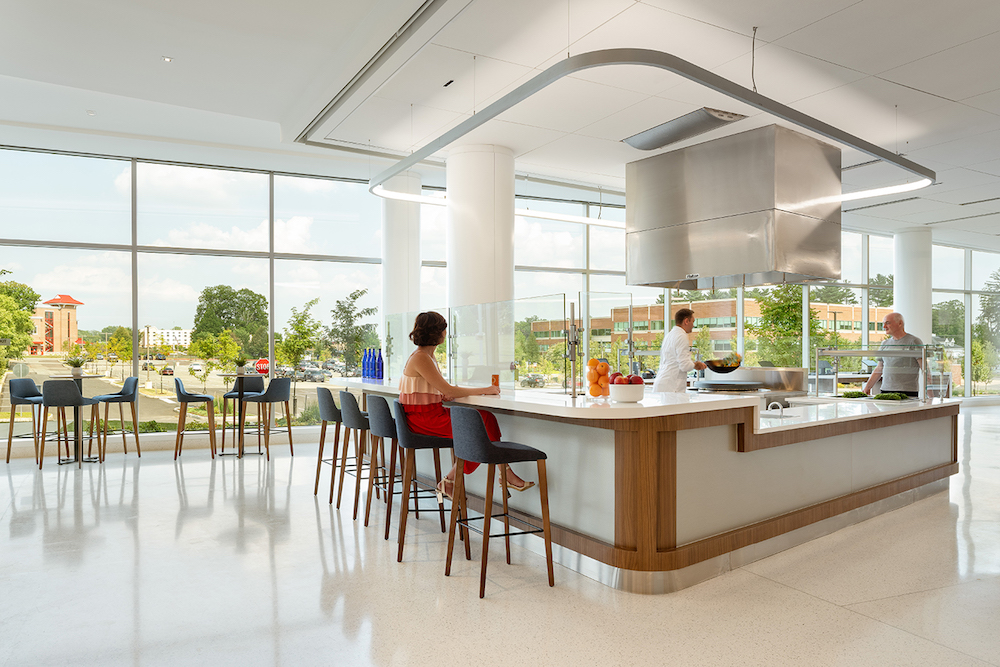
We are all trying to find the formula for the new hybrid office while simultaneously experiencing the greatest disruption of our careers. The when, where, who and how of going back to the office always seems to fluctuate just as we think we have homed in on the answers. One area that has become more prevalent in light of this disruption is a newfound awareness of health and wellness. This awakening, however, is not merely a trend but ultimately a demand for the new work environment, whether it’s at home or in the office. In almost every return-to-work poll and survey, 80% of respondents make “wellness” their number one demand for going back.
The pandemic years have brought us glaring examples of the climate and environment’s connection to wellness. The virus itself is challenging how we interact with each other and sustain our connections and relationships. The previous model of a 40-hour work week in an office is being abandoned, as it was a component of unhealthy workplace cultures; prompting many to walk away from jobs and careers that demanded it.
Employees are emerging out of the pandemic suffering from burn out, isolation, and depression with deep concerns about political unrest and climate change seeping into their everyday psyche–it’s a lot to deal with. Leaders that ignore or brush aside the issues surrounding health and wellness are doomed to experience its effects, especially in the areas of productivity and talent retention throughout their organizations. Dedicating attention to a progressive wellness environment is a way to gain competitive advantage with emotionally connected, productive and happy employees.
Offering the unexpected can give employees the sense that the company cares about them and has put thought behind what they will experience in the physical workplace.
Workplaces have embraced designs that champion natural light, biophilia and healthy habits for over a decade. The conversation must now shift to include C-Suite leadership and human resources to define the cultural hybrid for wellness in their office. Offering the unexpected can give employees the sense that the company cares about them and has put thought behind what they will experience in the physical workplace. Experiences that focus on the individual offer the most opportunity for elevating the space. Just as everyone has their own COVID-19 story, we all have a preference zone when it comes to wellness. Recent research also suggests that it is not enough to simply rollout a wellness program with perks and features, but that a wellness approach must be fully embedded in the culture and behaviors: visible and knit into the fabric of a workplace itself, a yet to be accepted area of employee wellbeing.
Our newly imagined workplace has to elevate those events where we come together to work on the things we can’t do alone.
The physical elements and utilities of space have evidence-based standards programs under WELL and Fitwel that outline the steps available to optimize an office interior. Starting with their checklists, an organization can map a plan of adoption for a wellness landscape. In addition to the WELL building attributes that address air, water, light, sound, temperature, healthy foods and physical movement, there are emotional traits that can contribute to the productivity of an office not just in output, but in quality of outcomes. These types of emotional traits include: positivity, mindfulness, vibrancy, community, identity, and purpose.
Now that we are dispersed, these qualities need to be front and center to support a culture that can’t be duplicated at home, but has all the qualities we would bring with us. An office is the hub for that culture and its interiors can contribute in subtle and meaningful ways to the mission.
Design and Workplace Considerations:
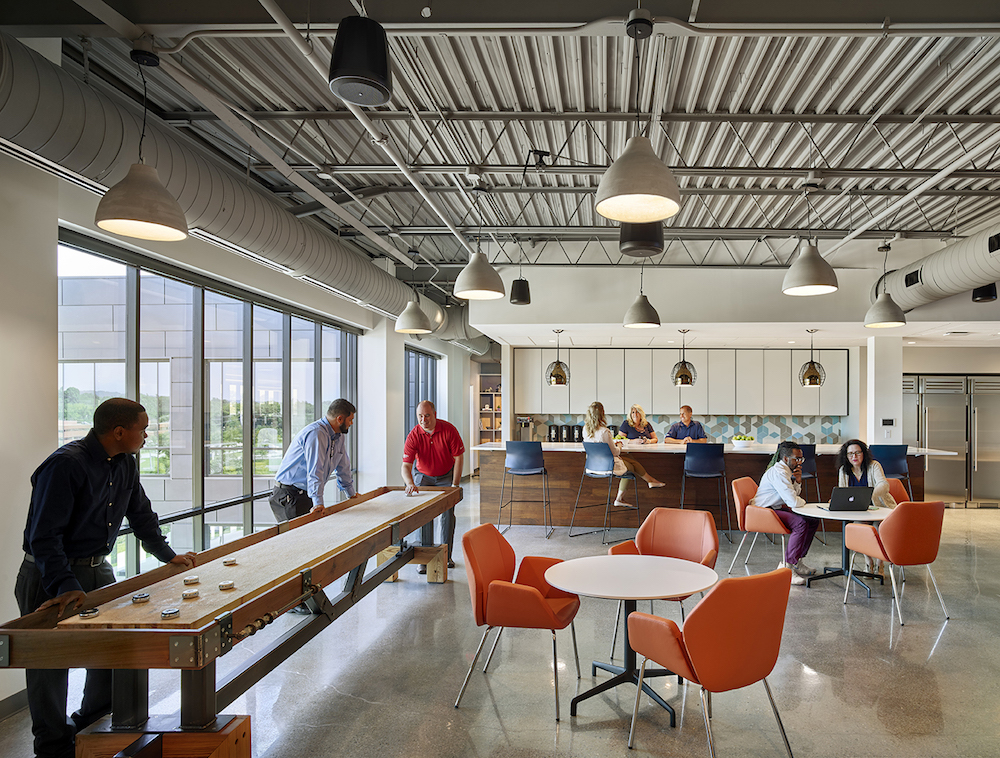
Positivity
- Visuals that celebrate milestone achievements of individuals and teams with authentic recognition for a job well done
- Social areas where it’s ok to be loud and laugh with your office workers without fear of disturbing others or being judged (works better if it’s encouraged)
- Celebrate the individual with areas that allow personalization with photos and memorabilia
- Provide choice of work settings that include restful and lounge spaces, trusting employees to use them appropriately
- Furnish the space with the proper tools so that employees can operate at their highest potential
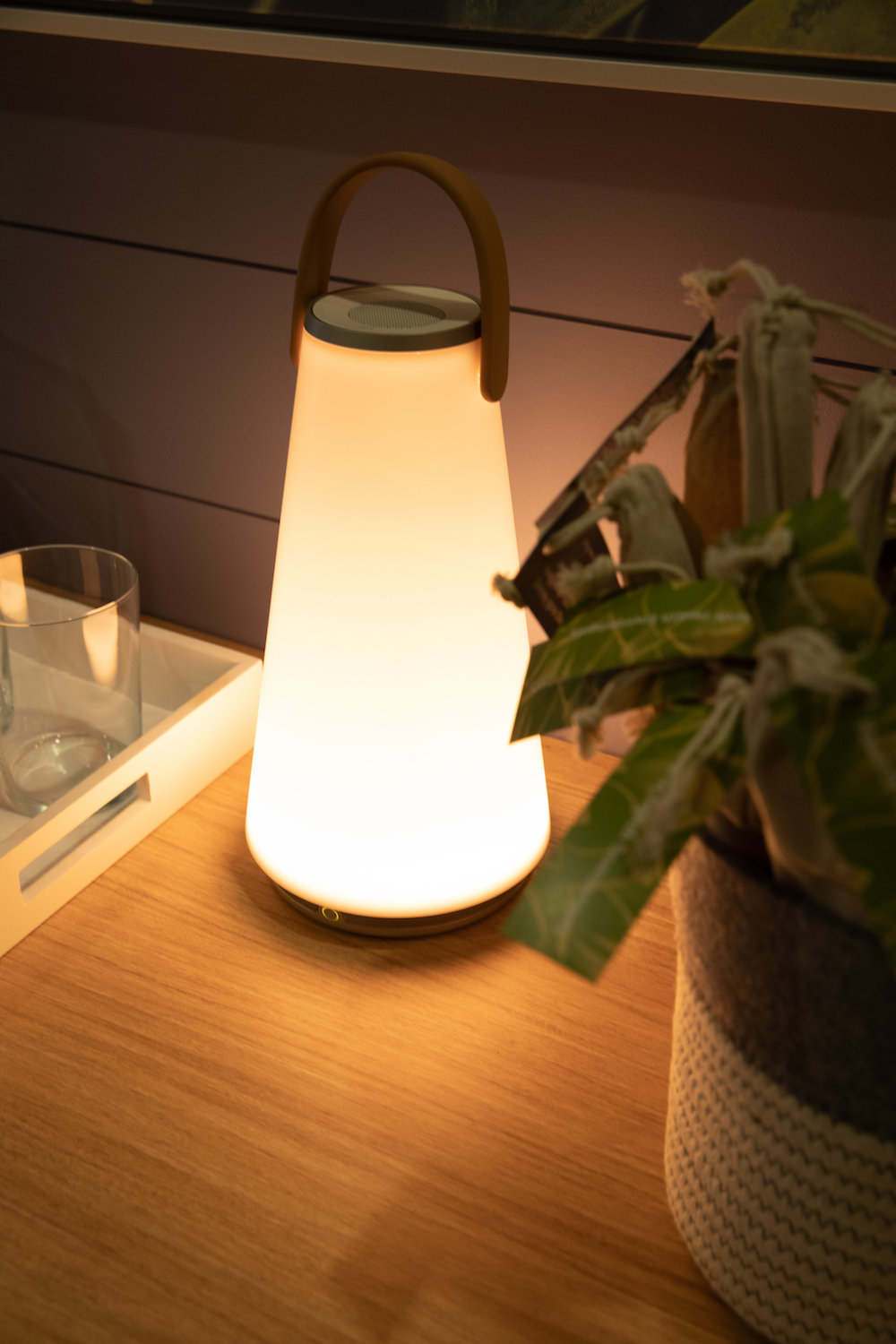
Mindfulness
- Provide meeting spaces designed for the events and conversations in which they’re looking to serve – such as more intimate (potentially soundproof) areas for private discussions as well as inclusive and welcoming spaces for larger, mixed interactions
- Create calm, subdued and secluded spaces that offer a relief from stimulation or technology to quietly think without interruptions
- Provide spaces for the private, personal phone conversations that may need to happen sporadically in the course of a day
- Offer a place of respite with lower light levels for meditation, prayer or just decompressing that is away from others and completely private
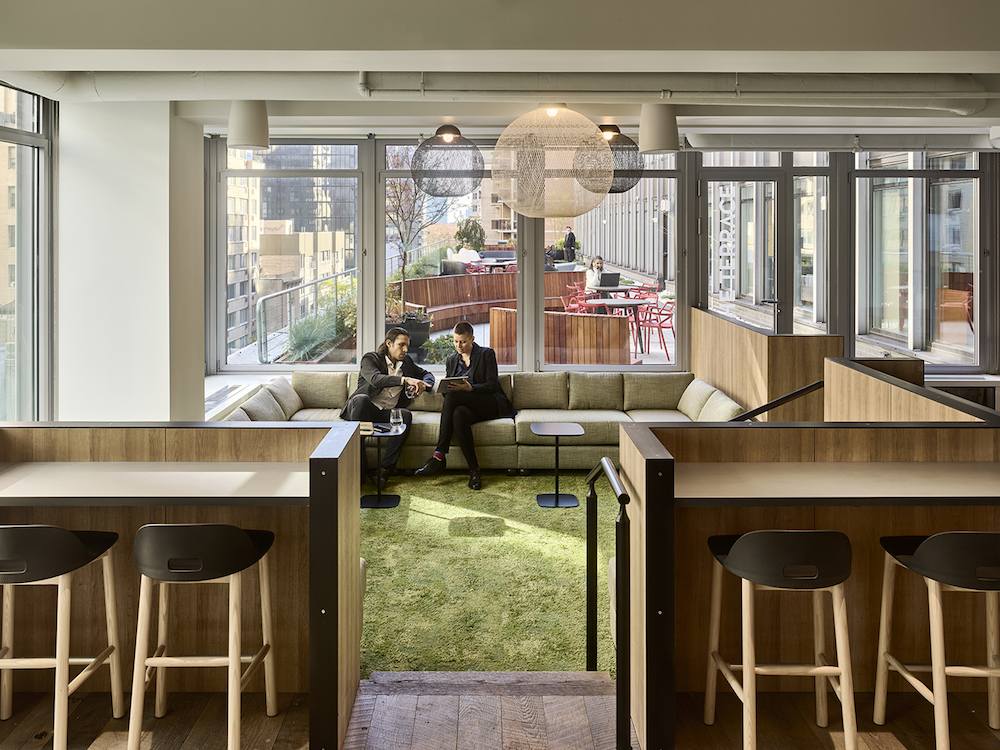
Community
- Express shared values and make them visible (i.e. “we believe health is a priority for our employees” – demonstrate with healthy food choices, amenities and spaces that promote health)
- Areas that celebrate employees that embody the values and brand
- Pay attention to inclusion in social and meeting spaces. How can we bring a remote participant closer to the content during a meeting?
- Provide all types of spaces required for the work that needs to be done–all tasks need to be supported with equal importance
- Inclusion of attributes that address the diversity of the population in abilities and cultural preferences

Vibrancy
- Create a welcoming space that allows people to be together without infringing on one another’s productivity
- Introduce areas of varied color and shapes (some research suggests that circles make people happy because of object association, i.e. balloons)
- Elevate lighting levels in spaces where there is more collaboration and interaction among employees
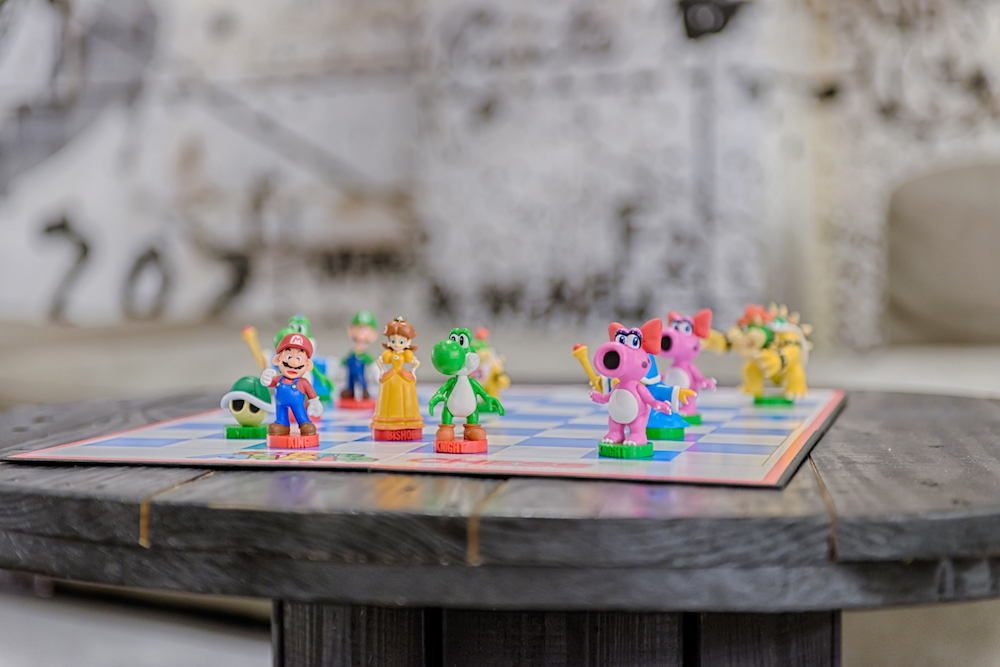
Identity
- Brand identity is embedded into furnishings and architecture through color and finishes
- Expression of the character of the organization in the interior fit out and furnishings to the point where people are proud of their office and they want to be there

Purpose
- Create choice of work settings that allow employees to select the best option for “completing the mission”
- Express the successes of the company through history and visually display the impact of their contributions on others
- Assign a philanthropic mission to align with company profits and visually tell the story
When we consider the topic of wellness in the workplace, it really boils down to happiness–and employee happiness is rooted in trust and respect. According to Ingrid Fetell Lee, author of “Joyful: The Surprising Power of Ordinary Things to Create Extraordinary Happiness”, we are 12% more productive in a state of joy. A happy employee is more creative, productive, optimistic and open to new things. A win-win for everyone.

